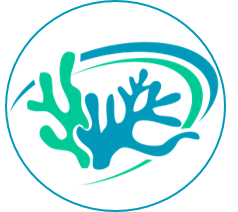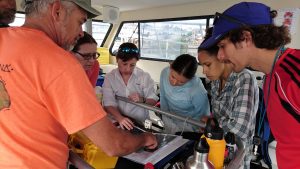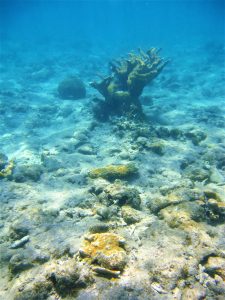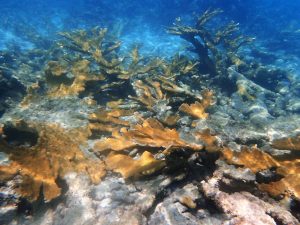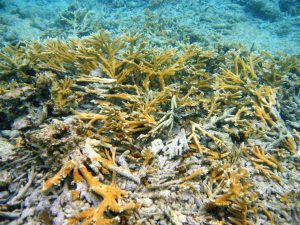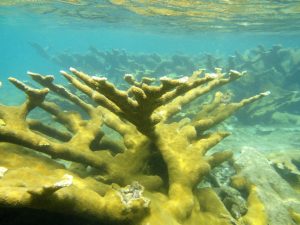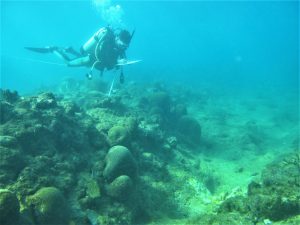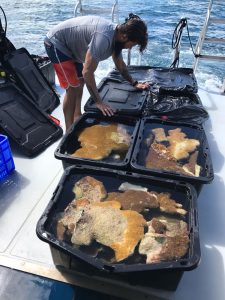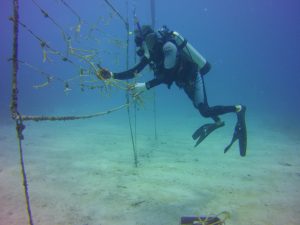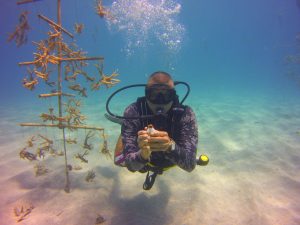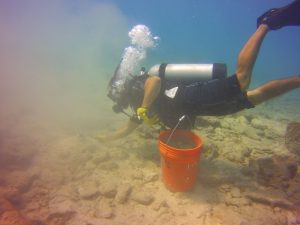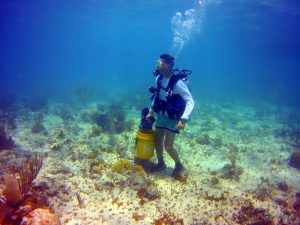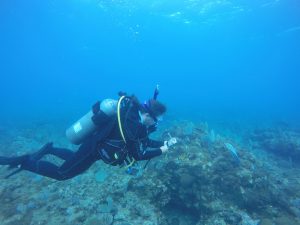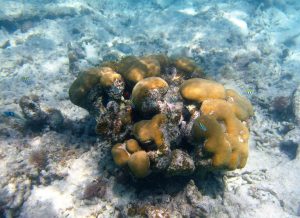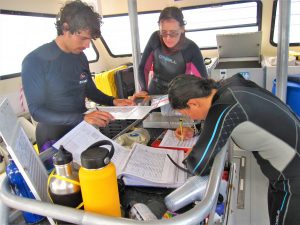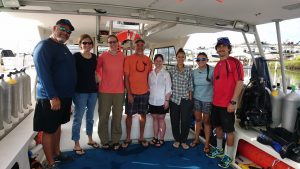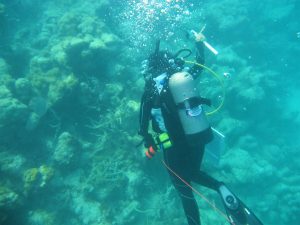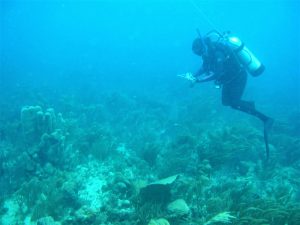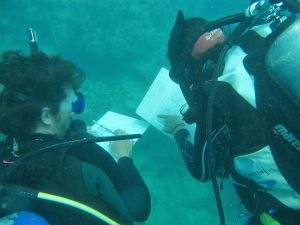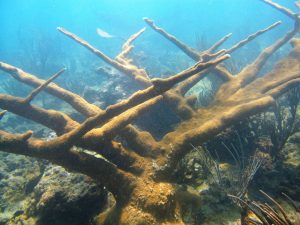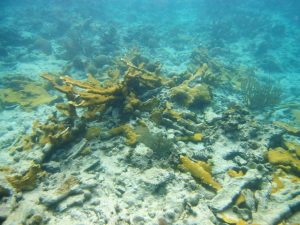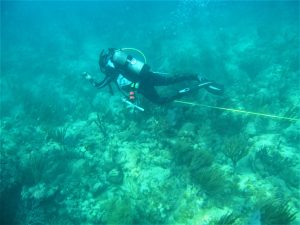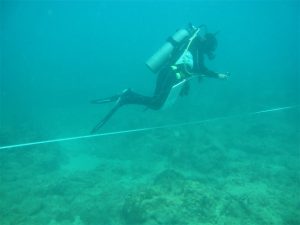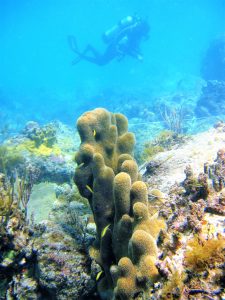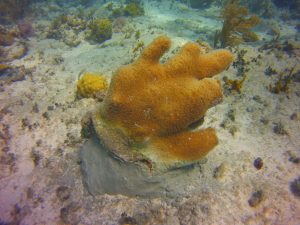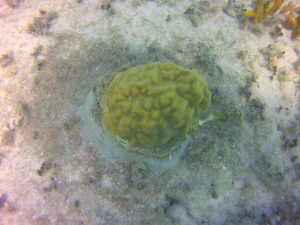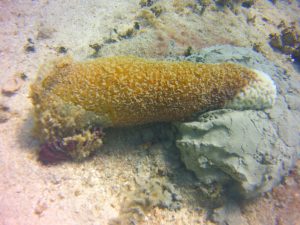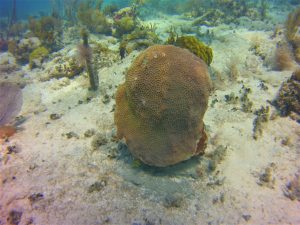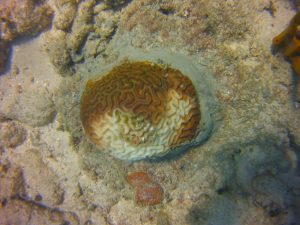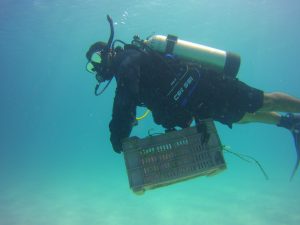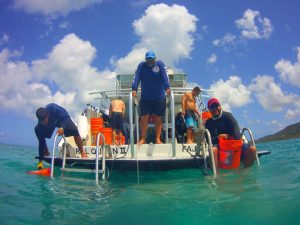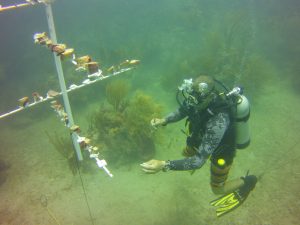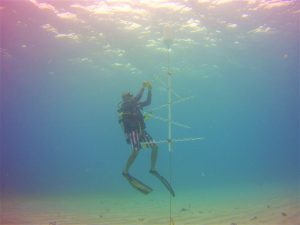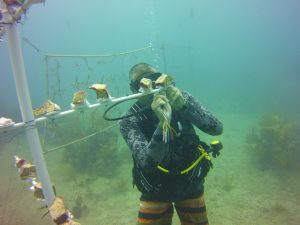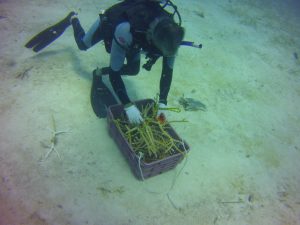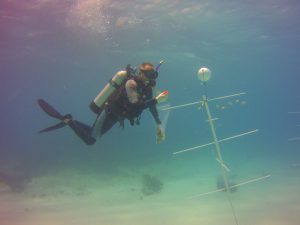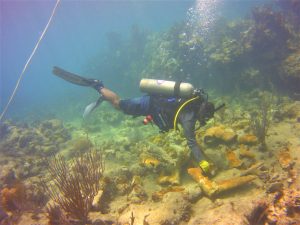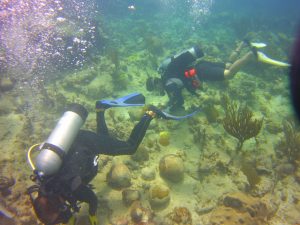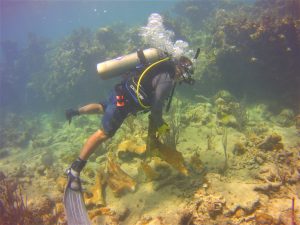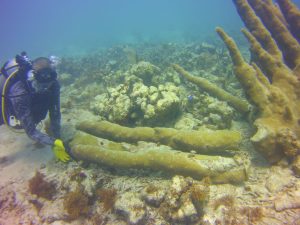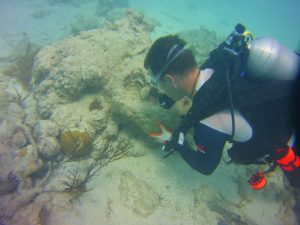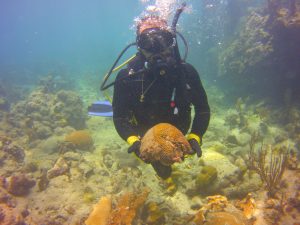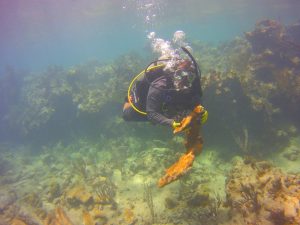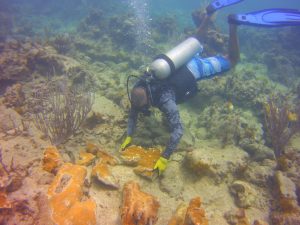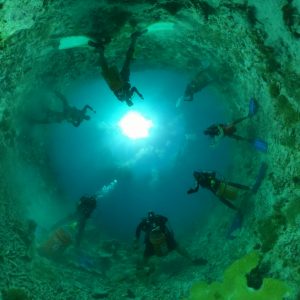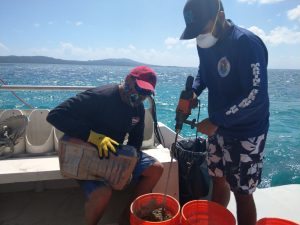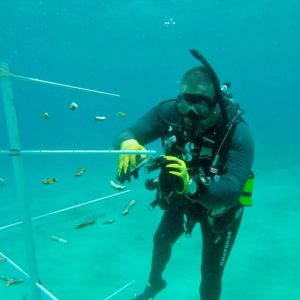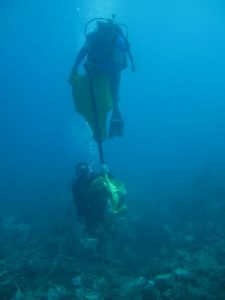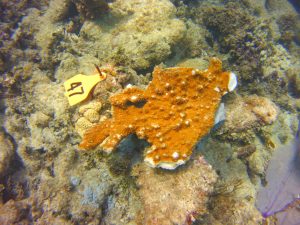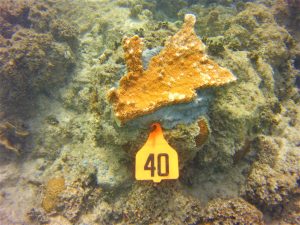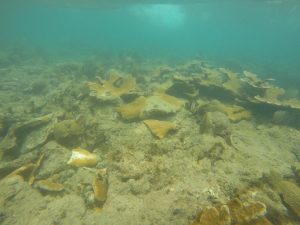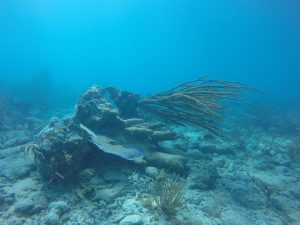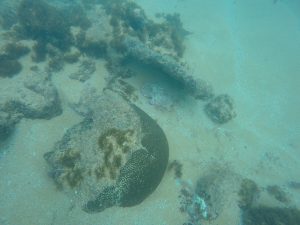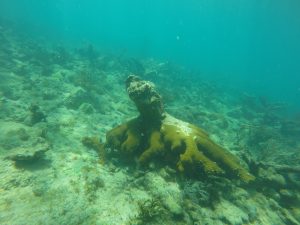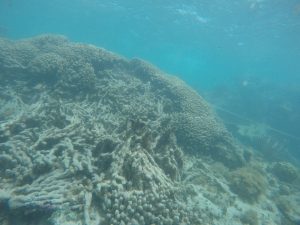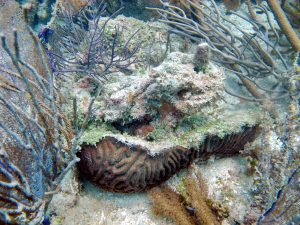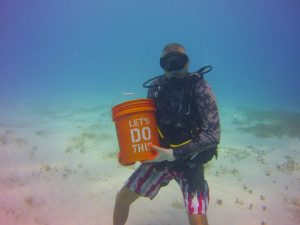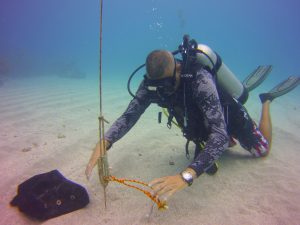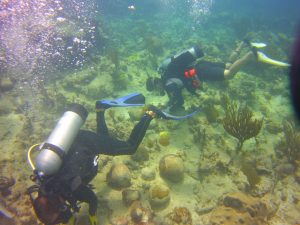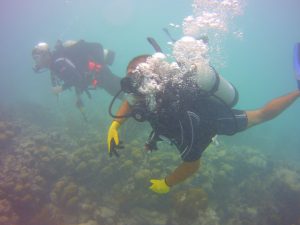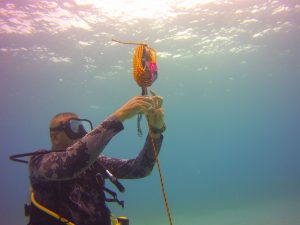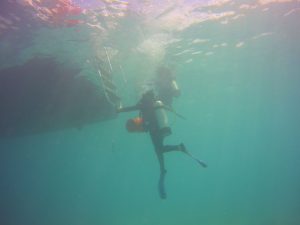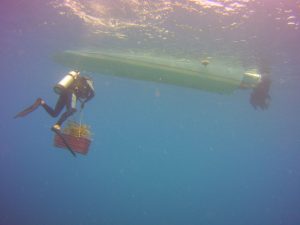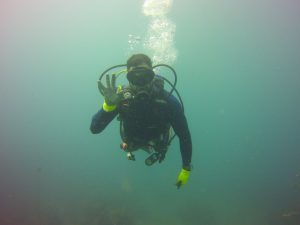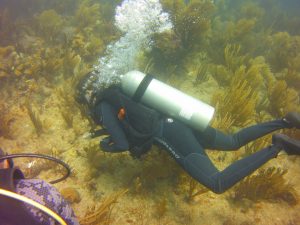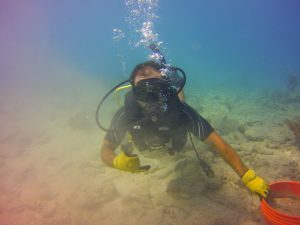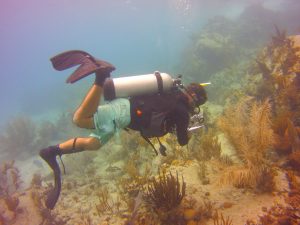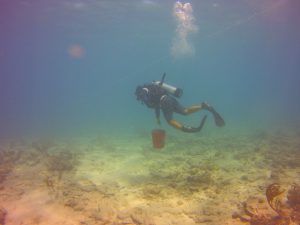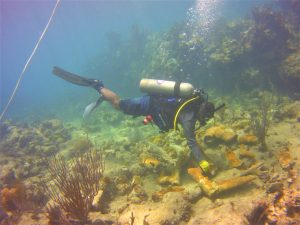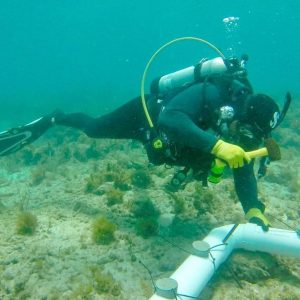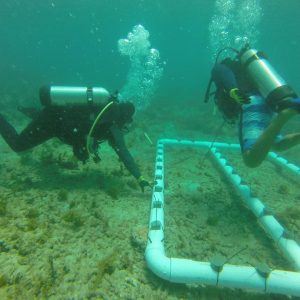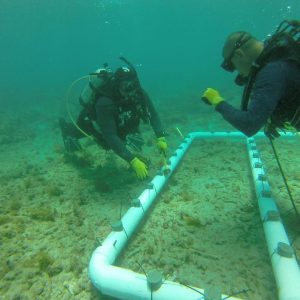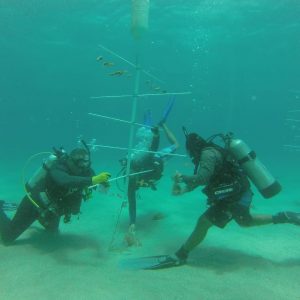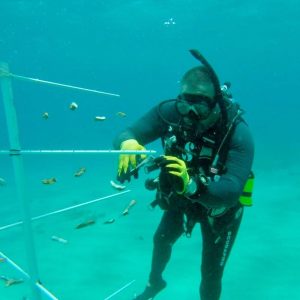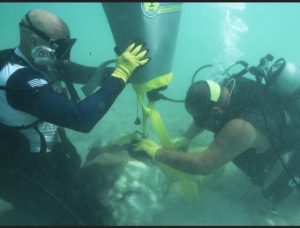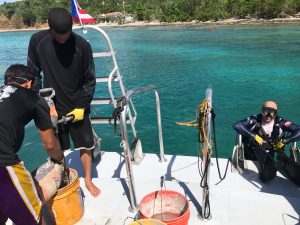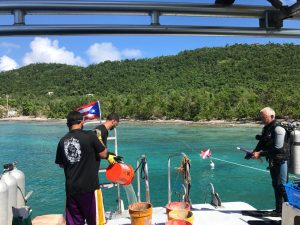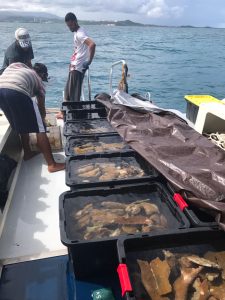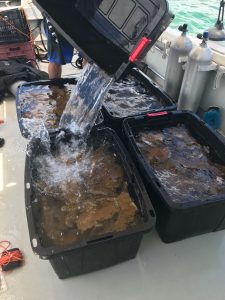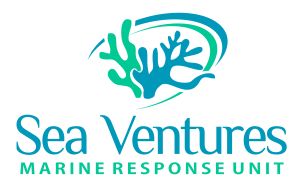Hurricane Impact Assessment and Triage
Assessment and Triage of Impacts to Coral Reefs in PR from Hurricanes Maria and Irma (2018)
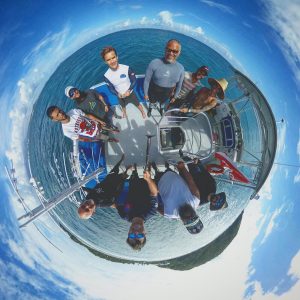
Sea Ventures’ MRU conducted coral assessments and restoration from the destruction left by Hurricanes Maria and Irma in Puerto Rico to inform the development of recovery strategies under FEMA’s Natural and Cultural Resources (NCR) Recovery Support Function (RSF).
This project was a collaborative effort among the NOAA Coral Reef Conservation Program (CRCP), Restoration Center (RC), National Centers for Coastal Ocean Science (NCCOS), the Puerto Rico Department of Natural and Environmental Resources (DNER), and the US Department of the Interior (DOI). Led by Sea Ventures Marine Response Unit (MRU) under contract to NOAA, two teams were deployed to assess the damage and conduct immediate efforts to stabilize damaged corals and fragments.
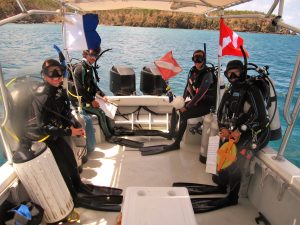
Led by Senior Scientist Amy Whitt, Azura Consulting LLC, the Assessment Team (left photo) consisted of four scientific divers who conducted in-water assessment (belt transects) and roving diver surveys to locate and document damage to corals and reef framework. The Team surveyed 153 randomly generated sites in shallow waters (20 feet or less) surrounding mainland Puerto Rico, Vieques, Culebra, and the islands within the NE Reserve corridor. Site selection focused on “high value” reefs characterized by high coral cover, the known occurrence of ESA-listed coral species, and contributions to coastal protection. To increase sampling efficiency and ensure adequate representation from around the islands, the sample frame was stratified by the storm path, geographic region, and discrete coral reef habitats (aggregate reef, patch reef, pavement, bedrock). Only corals greater than 20 cm in size (or with 20 cm of live tissue) were recorded during the assessment and roving surveys. Based on the amount of damage and total number of loose corals, the scientists rated each site as having a low, medium, or high potential for triage and also for restoration and categorized the overall damage to the site.
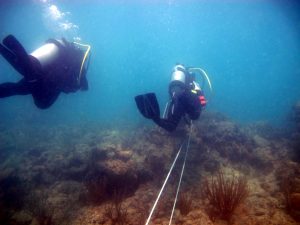
Divers conduct belt transects to assess damage to corals
The Triage Team (far top photo), led by Sea Venture’s Vice President Pedro Rodriguez, used this information to inform their efforts to stabilize loose corals and fragments of select coral species. Because coral fragment survival depends on attachment to stable substrate, the Triage Team first assessed the rubble fields in each site and collected loose rubble to be used for structure and substrate stabilization. Non-diving personnel prepared an adequate mix of cement, sand, and water that the technical divers used to prepare substrates and attach the loose corals so that they will withstand hurricane-force wave action. All corals were reattached to the reef substrate in a way that resembled surrounding reef structure and rugosity. The team recorded counts of all reattached corals by species and size class.
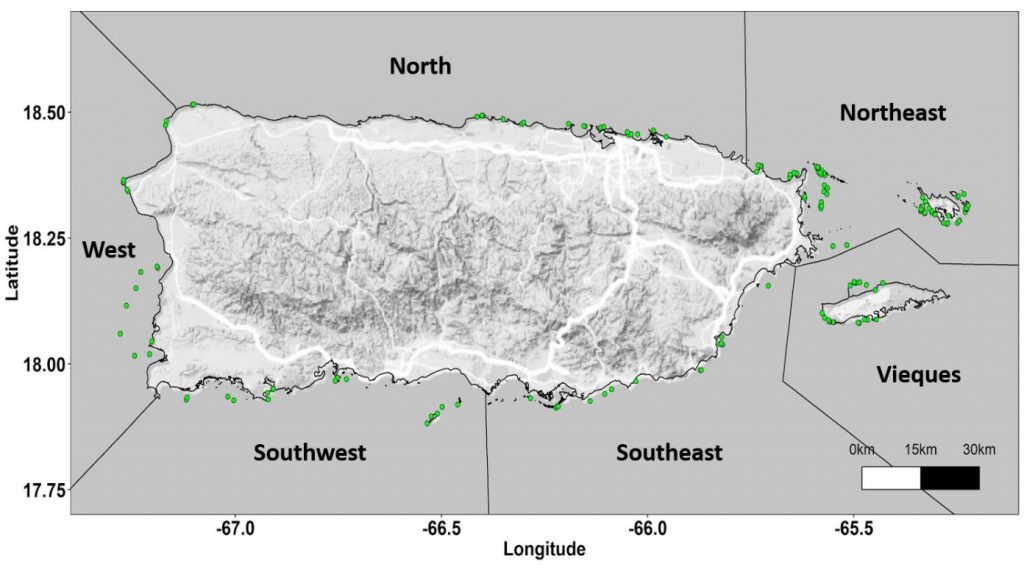
The 153 Assessment sites were scattered across PR, including Vieques and Culebra, in six regions (Northeast, Vieques, Southeast, Southwest, West, and North).
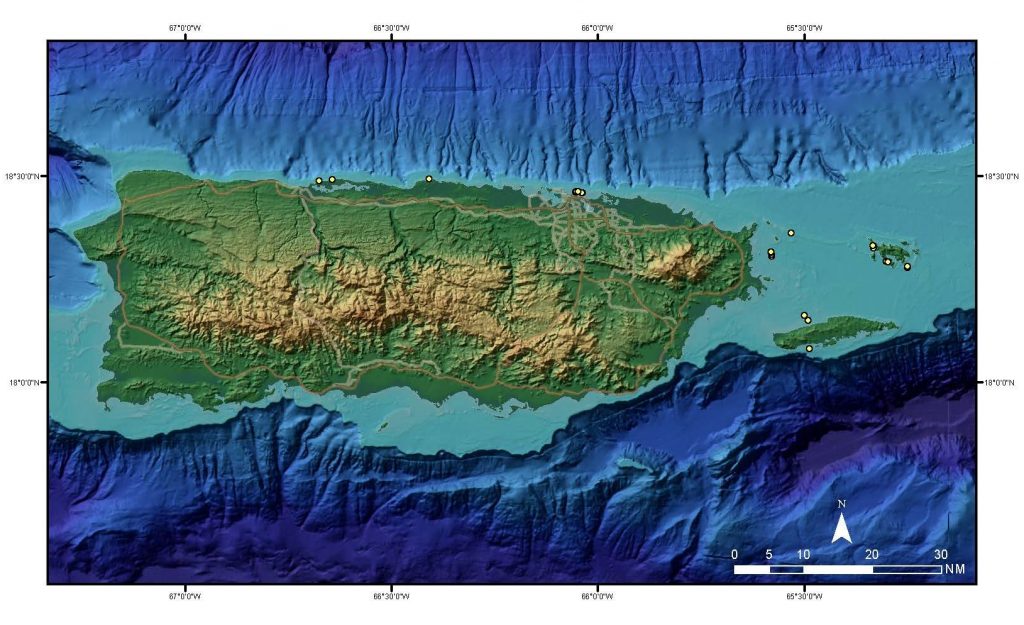
The Triage Team attached 9,278 at-risk corals across PR, including Vieques and Culebra.
The Assessment Team covered a total of 414,354 m2 of coral reef, with 11,300 m2 covered in the assessment (transect) surveys and 403,054 m2 covered by the roving surveys. A total of 80,297 corals were counted: 27,410 corals in transect surveys and 52,887 corals in roving surveys. Of these corals, 11% of those counted during the assessment surveys sustained damage (colonies were broken, overturned, upside down, or loose), while 14% of those counted during the roving surveys were damaged. ESA-listed species O. annularis, A. palmata, A. cervicornis, and D. cylindrus as well as the branching Porites species experienced the greatest negative impact from Hurricane Maria in terms of colonies damaged and number of fragments created. The Triage Team attached 9,278 at-risk corals across PR, including Vieques and Culebra. Most re-attached corals were 20-50 cm in size, but some larger colonies were also rescued (e.g., Dendrogyra and A. palmata over 1.5 m). Some fragments were also taken to local nurseries (i.e., Waimea nursery near San Juan).
Click here to view news video footage of the MRU Triage Team cementing broken corals to the substrate so that they can grow.
Gallery of Project Images
- The Assessment Team plans their next dives
- Divers conduct belt transects to assess damage to corals
- Damaged Acropora palmata
- Damaged Acropora palmata
- Damaged staghorn coral (Acropora cervicornis)
- Healthy Acropora palmata
- Diver conducts roving survey
- Corals are cached and ready for re-attachment
- Coral nursery tree
- Coral nursery tree
- Diver uses cement mixture to attach coral fragments to substrate
- Diver carries cement mixture to re-attach coral fragments
- Assessment Team conducts roving survey
- lobed star coral (Orbicella annularis)
- Assessment Team discusses site damage
- The Assessment Team
- Assessment diver videos the transect
- Assessment Team conducts roving survey
- Assessment Team
- Healthy Acropora palmata
- Damaged Acropora palmata
- Laying transect line for assessment survey
- Conducting assessment survey
- Assessment (transect) survey and healthy pillar coral
- Reattached pillar coral
- Reattached mustard hill coral (Porites astreoides)
- Reattached pillar coral
- Reattached Orbicella
- Reattached symmetrical brain coral (Pseudodiploria strigosa)
- Diver moves coral cache
- Triage team
- Coral nursery tree
- Diver places coral fragments onto nursery tree
- Diver places coral fragments onto nursery tree
- Cache of staghorn coral (Acropora cervicornis)
- Diver places coral fragments onto nursery tree
- Diver collects elkhorn coral fragment to be reattached
- Triage divers collect damaged corals
- Diver carries elkhorn coral fragment to be reattached
- Damaged pillar coral
- Diver collects overturned coral for reattachment
- Diver collects damaged grooved brain coral (Diploria labyrinthiformis) for reattachment
- Diver carries elkhorn coral fragment to be reattached
- Diver collects elkhorn coral fragment to be reattached
- Triage Team
- Triage Team mixes cement for coral reattachment
- Diver places coral fragments onto nursery tree
- Divers use lift bag
- Reattached elkhorn coral
- Reattached elkhorn coral
- Damaged Acropora palmata
- Overturned pillar coral
- Overturned coral
- Damaged Acropora palmata
- Damaged branching Porites species
- Overturned lobed brain coral (Colpophyllia natans)
- Diver uses cement mixture to attach coral fragments to substrate
- Coral nursery development
- Divers collect damaged corals for reattachment
- Divers collect damaged corals for reattachment
- Triage Team
- Triage Team
- Triage Team
- Triage Team
- Divers collect damaged corals for reattachment
- Divers collect damaged corals for reattachment
- Divers collect damaged corals for reattachment
- Triage Team
- Divers collect damaged corals for reattachment
- Coral nursery development
- Coral nursery development
- Coral nursery development
- Coral nursery development
- Coral nursery development
- Triage Team
- Triage Team
- Triage Team
- Corals are cached and ready for re-attachment
- Corals are cached and ready for re-attachment
